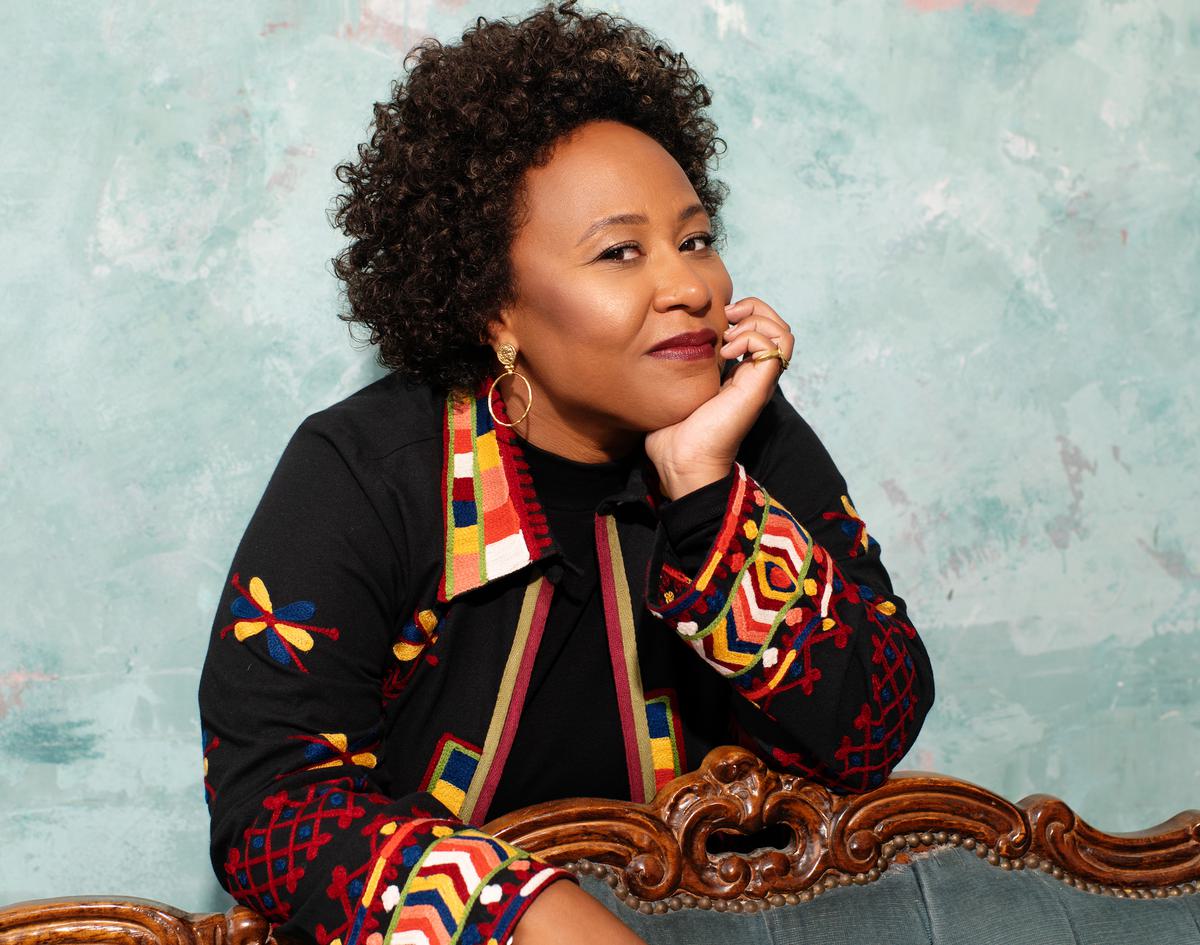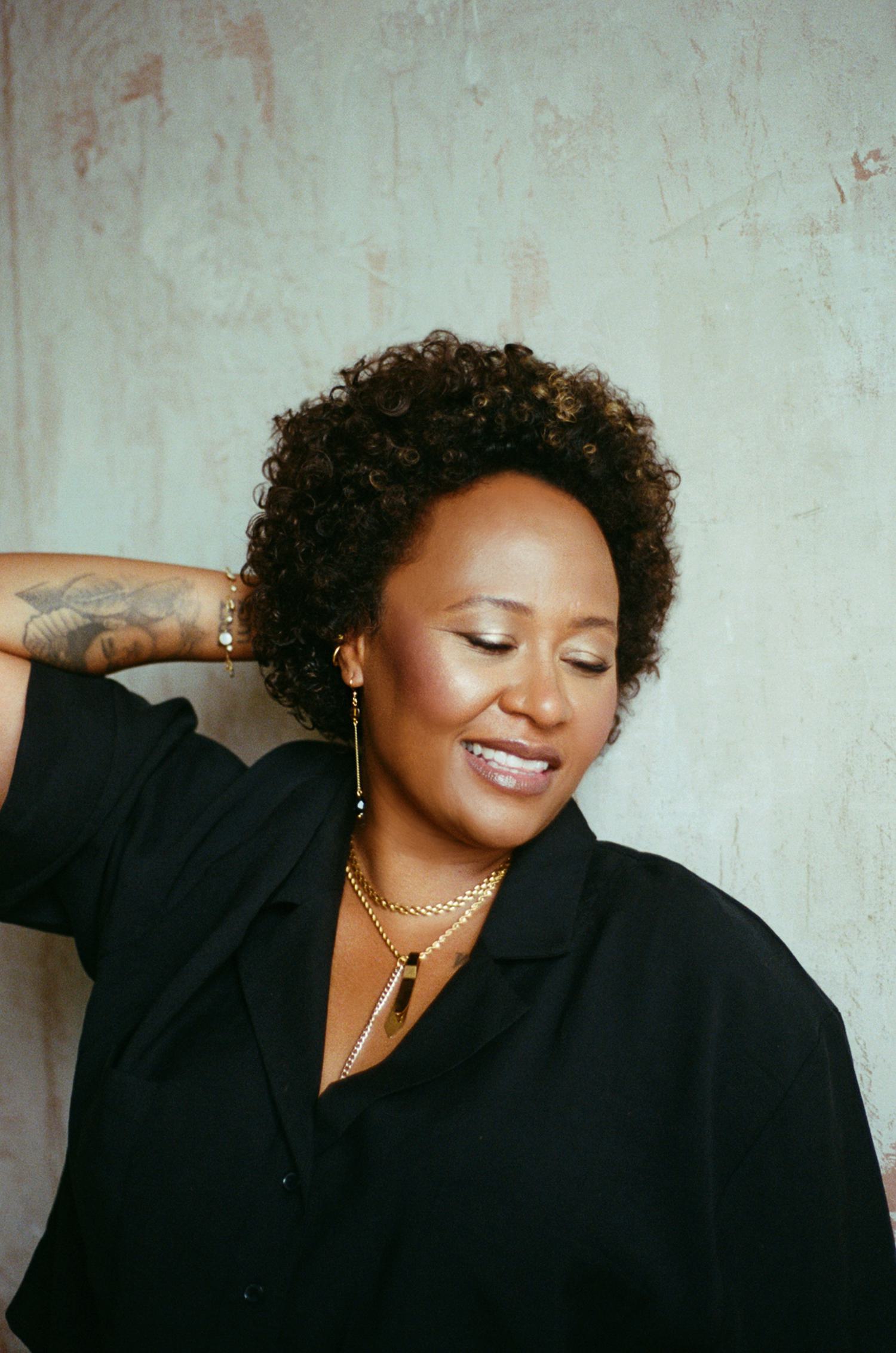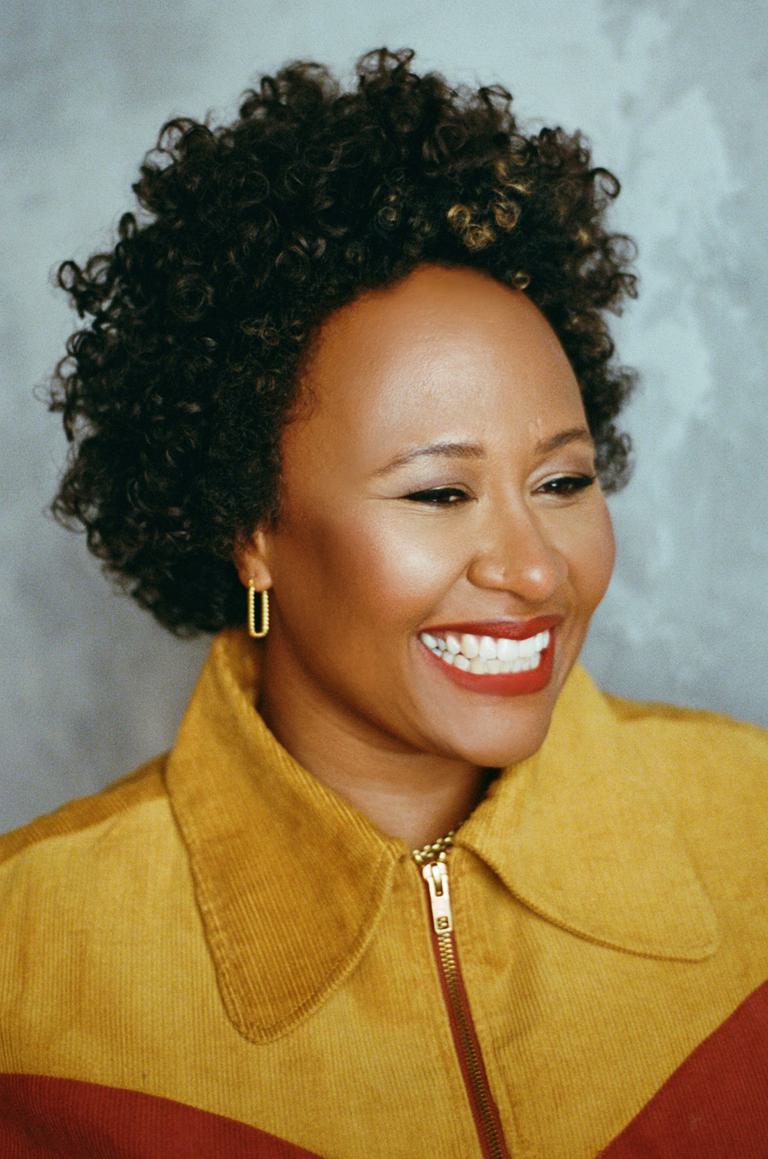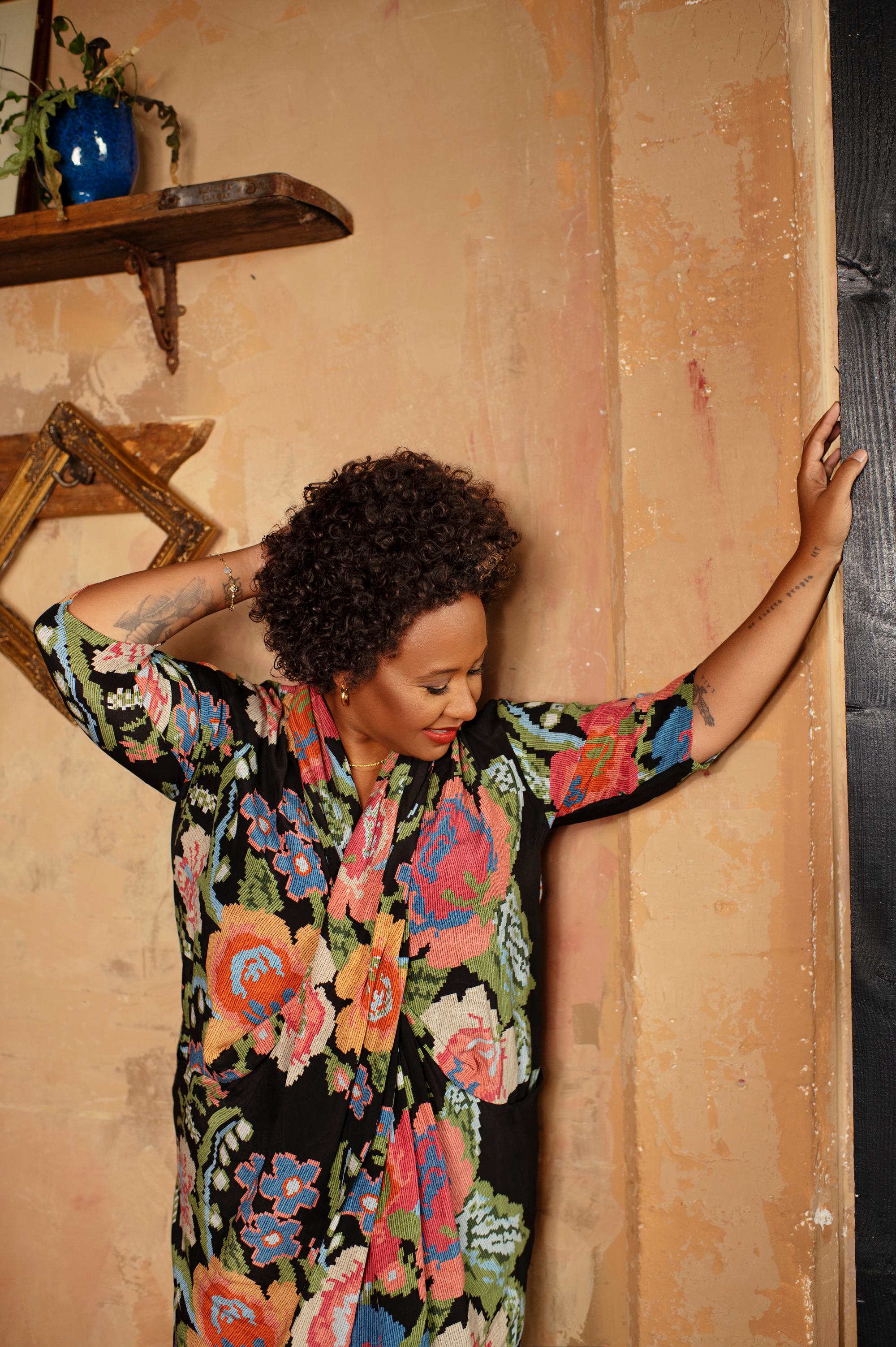
Emeli Sandé comes full circle with her pop desires
Revelling in a hard-won sense of freedom, Emeli Sandé is letting the flag of her true colours fly on fifth album How Were We to Know. She talks to Alan Pedder about learning to trust her instincts.
A decade ago, Emeli Sandé was momentarily bigger than The Beatles, breaking an albums chart record the band had held for almost 50 years.
That might not seem like much of a feat in the streaming-skewed charts post-2015, where Taylor Swift regularly shatters records previously set by Taylor Swift, but back then it was kind of a big deal.
Sandé’s debut album Our Version of Events made her the UK’s biggest-selling artist in 2012 and second only to One Direction in 2013, scoring armfuls of awards along the way. She famously performed at both the opening and closing ceremonies of the London Olympics – not even Paul McCartney managed that – and, later, at the White House for then-president Obama. Then, as inevitable as the surviving Beatles using AI to resurrect one ‘last’ demo, the flipside of Sandé’s ubiquity eventually caught up with her. Big time.
For the Scottish artist, the backlash felt bewilderingly unfair. Growing up as an overly shy kid in rural Aberdeenshire, singing had given her a way to communicate and open up to the world. For the world to then turn around and seem to say ‘that’s quite enough, Emeli, thank you,’ came as a painful jolt to her confidence. More painful still was splitting from the man she’d loved since she was 17, their decade-long relationship demolished by Sandé’s exploding fame. “I definitely experienced the full Saturn return,” she says, thinking back on the maelstrom. “I had to dismantle so much of my life and what I thought life should be, and then had to try and piece it all back together again.”
Now on the cusp of releasing her fifth album, How Were We to Know, Sandé says she’s become “a completely different person” through learning to trust her own instincts. “I have so much more of a realistic view on life these days,” she explains. “Things didn’t work out in the perfect way I saw them working out, and although it was devastating at the time, I’m happy I went through that. And, looking back, I realised that maybe there were lies that I told myself and there were signs that maybe certain paths I took weren't the right paths to go down. I think trusting your instincts is so important. That’s a big lesson I’ve learned.”
Entering the music industry is much like entering politics, in the sense that, while you can go in as an idealist, you surely won’t come out as one. Sandé alludes to “the dark shadows behind the curtains” when she talks about her experience of the past ten years, reflecting on her own naiveté with empathy and kindness. “So much is hidden from you at that young age. How are you to know what the reality is? Then, the more you learn, you have to grow up and get a bit more real.”
When we talk, Sandé is at her parents’ home in Aberdeenshire, not far from the house she grew up in. The past few weeks have been hectic with promo and rehearsals, and world events seem at their heaviest in ages, so she’s come back to where she feels most grounded. A place where she can walk down the street and bump into one of her old teachers, say hi to people in the local supermarket where she used to work, and spend time with the women she’s known since recorder club at school. “Being here really makes me feel myself again,” she says warmly. “I get this strange but lovely feeling of remembering who I am, or who I was when I lived here. This is where I learned my morals, and where I first fell in love with music.”
Although she soon graduated from recorder club to learning classical pieces on clarinet, it was the family piano that Sandé would rush home to in the evenings after school, spending hours trying to work out the chords to her favourite Nina Simone songs. She wrote her first song at 11, for a school talent show, and by 16 she’d moved to London, hired her first manager, and was doing the rounds at various labels. Already displaying some of the instinct that would go on to define her later career, Sandé was uncomfortable with the terms that she was being offered, and, with her manager’s blessing, chose to put her future in music on pause.

Growing up as the daughters of a STEM teacher dad, who emigrated from Zambia in the ‘80s as an ambitious mechanical engineer, the importance of education was not lost on Sandé and her sister (who later became a teacher herself). Taking up a degree at Glasgow University’s School of Medicine, Sandé fell in love with the idea of becoming a doctor. But music never left her. After changing tack and graduating with a BSc in neuroscience, she went back to her first love with renewed determination.
From there, Sandé’s rise to fame has been well documented, from the early features on hit songs by Chipmunk and Wiley to the co-writes for Rihanna, Katy Perry and Alicia Keys, and the decision to stop using her real name, Adele. But at this stage in her career, where she came from feels less relevant than where she’s still to go. When her 10-year stint at Virgin EMI came to an end in 2020 and she found herself without a label, management or publisher as the UK headed into lockdown, Sandé used the freedom and the enforced stillness of the pandemic to her advantage.
“So often in life you’re just chasing your own tail in one way or another, so it was quite a luxury to have that time and space to write,” she says, reflecting on how, by examining her own deep connection with music, she worked out what she really wanted to say with it. “That, combined with being on an independent label that let me do whatever I wanted, creatively, has allowed me to make something that I feel is exactly what I wanted to make.”
Since finding a new home on longstanding British label Chrysalis Records – currently enjoying its own renaissance – Sandé seems to have hit a whole new stride. How Were We to Know is her second album for the indie in little over 18 months, after Let's Say for Instance, but it feels every bit as considered and articulated as her best work. It’s an album that revels in its own confidence, from the scene-setting vulnerability of “All This Love” through to the classic-sounding gospel soul of the anthemic closer, simply titled “Love”.
Clearly, Sandé has a certain four-letter word on her mind. How Were We to Know is dripping with the stuff. But it’s more than just a ‘love album’. It’s the sound of Sandé summing up, distilling some of her most foundational life experiences into one concise package of wisdom and flair. “The songs were written over different periods of my life," she explains. "But I didn’t want to put them in chronological order. I wanted each song to represent a different chapter and to talk about a distinct time in my life, without overlapping or telling things twice.”
A secondary theme for the album, and perhaps something more concrete to hold on to, is a focus on acceptance and forgiveness, and especially self-acceptance and self-forgiveness. The title track spells it out most clearly: being kinder to ourselves is the key to finding peace, but it’s really bloody hard. For Sandé, the song speaks to more than just romantic love. “Ever since I was a kid, whether through soul or music, I’ve tended to not think anything is good enough until it’s completely, in my eyes, perfect,” she says. “I’ve learned that you sometimes have to let go of that, because you can only have so much control over things. You have to have mercy on yourself.”
Though it was written several years ago, it’s only now that “How Were We to Know” is finding an audience outside of Sandé’s closest circle. “I’ve lived with that song for a long time and considered it for other albums, and that, for one reason or another, didn’t work out,” she says. “But I’ve always loved it and held it as a special one. I wanted to wait for the right time to release it, and I think it’s found its perfect timing.”
The core message of the song is mirrored, in a way, by another album highlight, “True Colours”. Here, Sandé draws on her own personal journey to self-acceptance in the hope that listeners can find themselves somewhere in the song and take comfort from it. Like “How Were We to Know”, it’s one of the oldest songs in the album, which she describes as “a snapshot of a decade,” but gains new relevance now that she’s living as an out and proud woman (she announced her engagement to classical pianist Yoana Karemova in September 2022).
“I’ve had to really learn how to be free and to allow myself to be completely myself, with my sexuality, my race, my culture,” she says. “Sometimes you don’t realise the mental prison you create for yourself, and I think it’s such a shame that so many people still feel like there are parts of them that they can’t show to the world. A person can go their whole life and we never get to see the true them.”
Whitney Houston is one example that comes to mind as we talk. The megastar’s fluid sexuality was often whispered about, but it’s only since her tragic death in February 2012 – the same week of Sandé’s debut album release – that her lifelong relationship with Robyn Crawford, both romantic and platonic, has become canon. “I find the documentaries on her so heartbreaking,” says Sandé. “I’m so mad at what happened to her, and the enjoyment people seemed to take in her unravelling. It was such cruelty. She was clearly a musical genius because of what she did with her voice, and I would have loved to have heard how she would have played the piano and how she would have expressed herself in all these ways we’ll never get to see because she left us too young.”
Sandé knows from experience that it’s all too easy to wake up one day and realise that, even with only good intentions, you’ve boxed yourself into a space that can’t contain the real you. “True Colours” is her way of helping others to break out. “There are only a few songs on the album where I’m directly trying to encourage the listener, and ‘True Colours’ is a really important one,” she explains. “I think we are sometimes so preoccupied with trying to reach this image of perfection that we don’t realise that our true beauty glows through the rougher side of us. The things we might consider not so attractive or imperfect. I want to encourage people to show it all and know that people will still see the beauty in them.”
At its heart, How Were We to Know is an album that could only have been written by the kind of person who describes themselves as a hopeless romantic. Sandé says as much herself. Perhaps it’s the influence of her parents’ almost 40-year marriage, or the fact that she’s a Pisces who can’t help imagining that every infatuation is the greatest romance of all time. “Everything has to be all or nothing in my life,” she says, laughing. “I’m still like that, even though life has taught me that it’s probably a dangerous way to be. I can’t help it! I never remember the pain. I’ve always been, ‘Right, here we go again. Let’s go for it.’”
"When you’re recording in a heightened emotional state, it’s almost like the emotions have nowhere else to go but into the music"
Much like falling in love, Sandé says she doesn’t really know how to hold back when it comes to music. If she writes a lyric that she feels is a true expression of herself or of a feeling she’s having in that moment, fear of oversharing doesn’t even enter the equation. But even for fans who have come to expect honesty and openness from an Emeli Sandé album, How Were We to Know might hit different.
“My heart really is on my sleeve on this one,” she says, proudly. “With some of the songs it felt like the lyrics just fell out of my mouth. I think it’s because when you’re recording in a heightened emotional state, it’s almost like the emotions have nowhere else to go but into the music. I always think that’s a good sign for a song, when it flows out like a river and you don’t have to overthink anything.”
To help get her into that golden state, Sandé chose to work on the album only with people she trusted and considered a friend. People who already respected her artistry and ideas. In that way, the sessions allowed her to lay out her innermost feelings without compromise or feeling self-conscious, fostering an atmosphere where vulnerability could naturally diffuse into the songs. “I think if you’re not being real in your music, and if you’re not sharing your own pain and weaknesses, people can hear that it’s a façade,” she says. “With this album, the music came from friendships, and being able to feel completely free in the music making process, and I think that shows.”
There is one emotion that Sandé has tended to shy away from in her songs but embraces here on “Like I Loved You”, and that’s anger. Or at least a leaning towards it. She backtracks a little when talking about it, but the sentiment is much the same. For many women of Sandé’s generation, and especially mixed-race and Black women, anger was, growing up, an impermissible emotion. “You’re always told to not get angry, to just smile and get on with it,” she says, “and you find a way to blame yourself for so many things.”

“Those feelings are something I’ve learned to own a bit more, and that’s taken me a long time to do. ‘Like I Loved You’ is about owning your self-pride. You’re not always being selfish in standing up for yourself. It’s not always egotistical to say to someone that, actually, I know my love is really worth something and I do love people well. My song ‘Hurts’ has a similar vibration, but where that was rooted in being hurt and suffering, this one is more about owning your worth and loving yourself.”
Of course, the downside of being a hopeless romantic is the risk of falling into relationships that are hopeless, full stop. Sandé admits that her blinkered approach to love has sometimes got her into sticky situations that left her feeling used. But in songs like “There For You” and “All This Love”, it all comes back to forgiveness and acceptance.
“I don’t want to sound cheesy,” she says, cautiously. “But I do think that once you’ve had that soul connection with somebody, it’s like a tattoo on your heart. It’s there and you’ve committed to it. You can’t really erase it. Like they say, some people are for life, some people are for seasons, and I think the key is to always look back and think, ‘What did I learn from that part of my journey?’. In that way, you can try and hold on to the beauty of that thing, because there’s beauty in everything.”
Sandé may be zigzagging through ten years of experience as the album unfolds, but the choice to start with the self-questioning of “All This Love” (“Oh my god, I swear it’s building up / So what am I supposed to do with all this love?”) and end with the resolution of “Love” (“Don’t give up on love / Love’s not giving up on you“) is no accident. Sandé says she originally intended for the power-ballad-with-a-groove “End of Time” to close the album out but realised that letting “Love” do the honours instead would send a more powerful message. “I also thought it would make a brilliant encore song,” she says, grinning. “I liked the idea of people leaving a concert with that final message of let’s try our best to love one another, even though it’s getting harder and harder.”
This past weekend, Sandé aired some of the new songs for the first time at a sold-out show at London’s Royal Festival Hall, alone on stage with a grand piano and nerves of steel. It’s a reprise of an idea that she had when touring Let’s Say for Instance last year. She would play one city with the band and then come back some weeks later and play a full show again, this time solo – something she hadn’t really done in public since before moving to London.
“The piano is where my whole journey began so it felt like I was introducing people to the real me, more than ever,” she says. “There’s something about performing in that intimate setting, when it’s so raw, and it brought me and the listeners closer. I was able to tell them more about who I am as a musician, not necessarily just as a singer, and the reception was like something I’d never really experienced before. It was special.”

Of course, it must help when your fiancée is a classical concert pianist. Or perhaps that makes it even more daunting? Sandé shakes her head. “Yoana is really good at putting me in the right mental state for these shows, because it’s so much about your psyche when you do these things,” she says. “The level of precision and composure she has when she’s playing… I find that so inspiring. But she’s so realistic. She’s like, ‘Relax. What are you worried about? You can always improvise. Don’t compare yourself to me, I’ve had 30 years of playing piano. If you want to get better, go downstairs and practice!’”
If Let’s Say for Instance was the sound of Sandé going back to her roots while still pushing forward, How Were We to Know is the musical equivalent of dotting the i’s and crossing the t’s of her pop ambitions. “These are the best songs I feel I’ve written as a pop writer and now I’d love to explore new territory,” she says. “With this album, I wanted to make sure that I’ve told my story right up to this day. I want to draw a line here and ask, ‘What’s the new story?’.”
More than that, it feels like she’s closing a loop. Having brought it all back to the piano, where it started, she’s not about to make the same orbit. The next record will almost certainly go off on a tangent of some sort, whether it’s exploring classical and jazz in more depth, or a stripped down, solo piece in the vein of Miss Simone’s And Piano!, or something she hasn’t yet thought of, Sandé has the freedom, the belief and the voice to do it all.
Get the Best Fit take on the week in music direct to your inbox every Friday

Lorde
Virgin

OSKA
Refined Believer

Tropical F*ck Storm
Fairyland Codex




